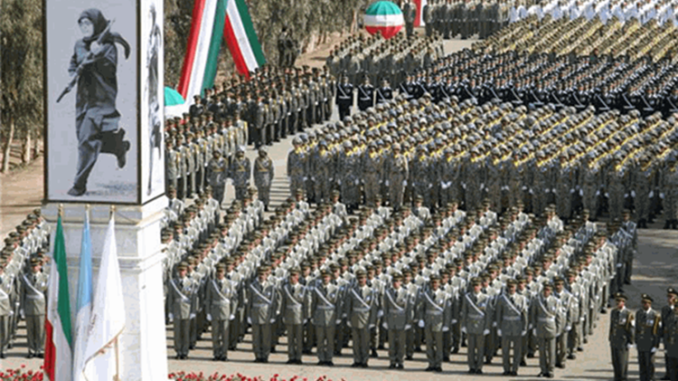
This piece briefly discusses the role of People’s Mojahedin Organization of Iran (PMOI/MEK) during the 8-years Iran-Iraq war forcing Iran’s then Supreme Leader, Ayatollah Ruhollah Khomeini, to finally accept ceasefire after rejecting peace talks for several years.
Background on Iran-Iraq War
Iraq invaded Iran on September 20, 1980, following repeated provocative border crossings by Iranian forces and warmongering military actions ordered by Khomeini. Nonetheless, many Iranians, including MEK members living in Iran, rushed to the battlefronts to defend their homeland, and by January 1981, the war had begun to change course.
By June 1982, Iran had reclaimed all lost territory and Iraq had proposed a ceasefire and a withdrawal of troops from Iranian land, but the mullahs, hoping to turn Iraq into an Iranian province refused the terms.
How Was the MEK Involved?
In 1986, four years after the peace talks were rejected, the Iran-Iraq war was still going strong and the MEK, the Iraqi government, and the people of Iran all wanted to end the conflict, but the mullahs held out, hoping to export their Islamic republic into Iraq and make Iraq into an Iranian province.
At the same time, around 1,000 members of the MEK had arrived in Iraq from France and Iran and many other countries in order to set up a new base of operations for their fight against the clerical dictatorship in Iran. They were granted a small patch of barren land in the desert on the border between Iraq and Iran, which had only a few partially-constructed buildings, no running water, and no electricity. Still, the base attracted hundreds more Western MEK supporters, mainly students and professionals, and had to expand quickly.
In order to bring an end to the Iran-Iraq war, the MEK began an international campaign and formed the National Liberation Army (NLA), which eventually resulted in a UN ceasefire.
The MEK’s NLA was independent of the Iraqi army and were not involved in any confrontation between the Iranian and Iraqi armies. Instead, they targeted Khomeini’s Revolutionary Guards Corps (IRGC) in a series of cross-border raids, whilst the Iraqi army took on a defensive formation.
In 1988, the NLA launched its first major strike, deploying tanks and armoured vehicles ten miles into Iran. This was followed by a battle against two Iranian divisions along a 31-mile front, and a further battle against the IRGC, in which the IRGC suffered large casualties and over 2,000 of their soldiers were taken prisoner.
This growing campaign by the MEK terrified the mullahs, who worried that the next offensive would spark a second revolution and cut the regime down. Khomeini didn’t want to risk the fall of the regime and reluctantly accepted a UN ceasefire to save his regime. He equated the ceasefire agreement to a chalice of poison and said: Accepting ceasefire is more bitter than (drinking) a chalice of poison; I traded my dignity and honor with God and quaffed the chalice of (ceasefire) poison.
The MEK’s Post-War
Following the war, the MEK turned Camp Ashraf into a 14-square-mile city with a university, mosque, museum, bakeries, shopping centre, four Olympic size swimming pools, zoo, and various social and other sports facilities. However, they still remained committed to their objective of bringing democracy to Iran and still faced incredible opposition and violent attacks from the Iranian Regime and, later, the Iraqi government.
Over the next 28 years, the Iranian Regime launched several attacks on the MEK at Camp Ashraf and later Camp Liberty, killing dozens and injuring hundreds and the situation only grew worse after the fall of Saddam Hussein in the early 2000s as the next rulers of Iraq were puppets of the Iranian Regime.
After 28 years of horrific abuse by the Iranian regime, the MEK was evacuated to Albania in 2016, where they continue their struggle for a Free Iran.

